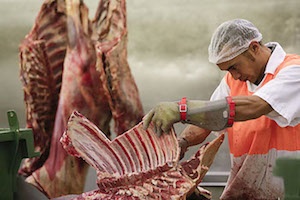EU broiler production could recover in 2023

These figures were driven by declines in major poultry producing countries such as France (-12%), Italy (-9%) and Germany (-3%). Poland , on the other hand, increased production by 6%.
Given developments in 2022, the emergence of highly pathogenic avian influenza (HPAI) is expected to remain a threat throughout the year rather than being seasonal. On the other hand, its direct impact on poultry production is limited as production can recover quickly. However, the damage to EU exports caused by the imposition of relevant import bans by third countries is more serious.
Broiler prices in the EU have continued to rise, driven by both limited supply and strong demand, and have reached exceptionally high levels since April 2022. In part, this has helped shift high feed and energy costs down the supply chain.
Since 2023, producer prices have become more stable. As feed and energy costs continue to decline from the very high levels seen last year, there could be some recovery in production in 2023. Thus, poultry MEAT production in the EU is likely to grow by around 1.1%. Demand for poultry benefits from general inflation as consumers replace more expensive meats ( beef , pork) with cheaper poultry meat. This could support growth in EU poultry meat consumption in 2023 (+2.5%).
Read together with it:
- Низкое предложение и устойчивый спрос: в Аргентине растут цены на мясоЦены на говядину снова выросли, что отразилось на полках супермаркетов и в мясных магазинах. За последние две недели розничные цены выросли на 8–12%, а на некоторые популярные отрубы рост превысил 15% по сравнению с октябрем. Тем не менее, продажи остаются высокими: потребители продолжают покупать, принимая новые цены и закрепляя тенденцию, которая повторяется каждый год в конце года, когда спрос ...
- Китайский рынок мяса: консолидация, меры безопасности и проблема субпродуктов«Мы завершаем выставку CIIE в Шанхае, в целом хорошую выставку, где мы видим консолидированные цены, как это было с начала года, но в то же время рынок ожидает решения по защитной мере, определения которой должны быть даны в конце ноября», — сказал он Valor Agregado Agro. Лидер пояснил, что глобальная ситуация характеризуется «колебаниями на международном рынке, вызванными интенсивной геополитичес...
- В Тульской области уничтожили 24 кг санкционных сыров и мясных продуктов из ЕвропыВо время совместной проверки с транспортной прокуратурой из оборота было изъято 24,45 кг сыров и мясных изделий, произведенных в таких странах, как Дания, Испания, Норвегия, Италия, Ирландия и Франция. Ввоз данной продукции на территорию России запрещен в соответствии с указом Президента, касающимся специальных экономических мер. Изъятая продукция была ликвидирована путем измельчения и денатурации...
- Смоленская область — лидер России по производству крольчатиныВ интервью «Агроэксперту» заместитель председателя регионального правительства Алексей Кучумов отметил, что регион достиг самодостаточности по таким продуктам, как яйца, мясо и картофель, превышая уровень 100%. Кроме того, Смоленская область занимает первое место по посевным площадям льна, а также активно развивает молочное животноводство, с общим поголовьем более 1......
- Rosselkhoznadzor has banned meat imports from two Belarusian enterprises due to violations.In addition, three other Belarusian producers are now subject to strict laboratory monitoring due to initial deviations: azithromycin was found in poultry MEAT from Druzhba Poultry Farm, and the pesticide imidacloprid was found in honey from Pchalyar Polachchyny Farm. Powdered MILK from Luninetsky Dairy Plant was also found to containcoli bacteria . These measures were taken at the request of the ...



























































